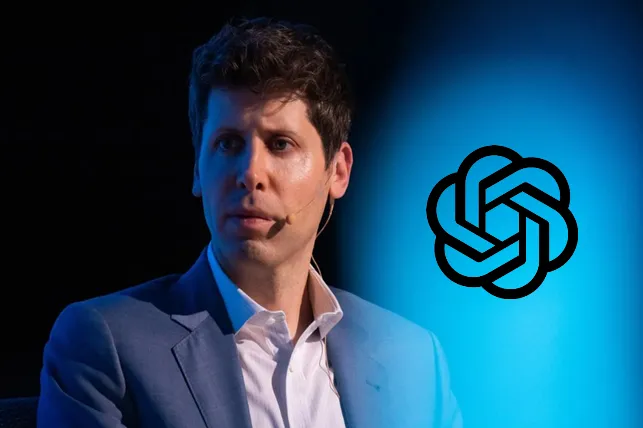Sync Up' Your Business With AI

The Pressure CEOs Feel About AI
Vision Has Always Been Your Competitive Edge
You didn’t become a CEO by ignoring change. You earned your seat by seeing what others couldn’t; market shifts before the headlines, operational inefficiencies before they turned into crises, and untapped opportunities hiding in plain ....

AI Workforce Training is Really Phase II
Why AI Upskilling Matters, But Leadership Vision Matters More
Last week, OpenAI, Microsoft, and Google all announced sweeping initiatives to train the global workforce in artificial intelligence. Billions are being pledged, platforms are being opened, and certifications are being rolled out. The message is clear ....

The Real ROI of AI is Not What You Think
It's Not About Automation. It's About Augmentation
In many of my articles, we've walked a path from uncertainty to action. We've established that it's okay not to have all the answers, that your job is to lead strategically, and that the path forward begins with asking the right questions and empowering ....

Your Team Has the AI Answers
Your Job Is to Empower Them
In a previous article, we zeroed in on the one question that unlocks any AI strategy: "What is the single biggest bottleneck preventing my best people from creating more value?" This is a powerful starting point, but it immediately raises a second ....

One AI Question That Changes Everything
It’s Not About Technology. It’s About Your People
We’ve established that your job as a leader isn’t to become an AI coder, but a strategist who asks the right questions about the business. But even that can feel overwhelming. With countless challenges and opportunities, where do you ....

You Don't Have to "Learn AI"
Your Job Isn't to be a Coder. It's to be a Strategist
As you learned in one of my previous articles, as a CEO: It's Okay If You Don't Know Everything About AI. The pressure on leaders to become overnight technical experts is unrealistic and counterproductive. In fact, it's distracting you from the one thing ....

It's Okay If You Don't Know Everything
You're Not Alone in This Digital Age of AI
As a leader, you’re expected to have the answers. But when it comes to Artificial Intelligence, the honest truth is that nobody has them all. Not you and not 85% of business leaders today. The landscape is a dizzying mix of hype and acronyms, and the pressure ...

Why 95% of AI Projects Are Doomed to Fail
It's Not the Technology. It's the Strategy.
The numbers are in, and they are brutal. Despite a historic $40 billion in enterprise investment, a staggering 95% of AI pilot projects fail to deliver any measurable ROI. Even worse, 42% of companies are now abandoning their AI initiatives entirely ...

Become Your Workplace AI Champion
It's Not an Adoption Problem. It's an Integration Problem.
Your company doesn't have an AI adoption problem. It has an AI integration problem. The technology is here, the tools are available, but they are useless without a human bridge connecting their potential to your team's real-world challenges.

n8n - AI Agents & HIPAA Compliance
What Every Healthcare and Business Leader Should Know
AI Agents are quickly becoming part of everyday business workflows. With tools like n8n, it’s easier than ever to connect APIs, automate processes, and even embed large language models (LLMs) into routine operations. But for healthcare organizations .....

The Great AI Up-Skill
OpenAI, Microsoft & Google Announce Training Initiatives
In a significant move to prepare the global workforce for an AI-powered future, leading technology companies have unveiled a series of ambitious education and certification programs. These initiatives are designed to make AI literacy accessible to millions ......

Building Your AI Foundation
Before the AI Magic Comes Technology Discipline.
Before you can build a skyscraper, you have to pour the concrete. Before you can launch a rocket, you must build the launchpad. And before you can achieve a true AI transformation, you must build a solid foundation.

So, You Set Up a Fancy Call Center
Why Your New Voice Agent Isn't a Break-through in the Least
Let's be honest. In the frantic rush to "do AI," businesses are making a trip to the digital office supply store. "Susan, I need you to run to Staples. While you're there, grab some pens, paper clips, a ream of paper, and oh, yeah, get me one of those AI voice agents to ...

From Vision to Value
Your 6-Step Roadmap to Successful AI Transformation
In the rush to adopt Artificial Intelligence, countless businesses are making a critical mistake: they’re chasing the technology without a plan. They invest in impressive-sounding tools without a clear strategy, leading to wasted resources, frustrated teams, and failed initiatives.

People & Processes
The Unbeatable Alliance in the Age of AI
In the race to adopt artificial intelligence, it's easy to get lost in the technical details of algorithms and automation. But the most successful AI integrations aren't built on code alone; they're built on a profound understanding of the fundamental distinction between ...

Beyond the Algorithm
A Human-Centric Playbook for AI Integration
The dawn of widespread Artificial Intelligence integration is upon us, promising unprecedented efficiency and innovation. Yet, beneath the surface of technological excitement lies a significant challenge: the understandable anxiety of the human workforce.









